Last updated on March 26, 2024

Knight of the Ebon Legion | Illustration by Alex Konstad
Deathtouch is bound to appear in your games as one of MTG’s evergreen mechanic. It shows the flavor of venom or poison or just a deathly gaze.
Today I’m looking at how deathtouch works in Magic with examples and corner cases, how it interacts with other abilities, and more. I’m also going to touch on some of the best deathtouch cards ever printed.
Ready? Let’s get started!
How Does Deathtouch Work?

Atraxa, Praetors' Voice | Illustration by Victor Adame Minguez
Deathtouch is a mechanic that translates to ”whenever a source with deathtouch deals any amount of damage bigger than zero to another creature, that creature is destroyed.” It usually applies to creatures but in some cases can be applied to spells as well. There’s recently been some effects that give deathtouch to instants and sorceries. But there’s still some design space left to grant deathtouch to other sources of damage, like planeswalkers, enchantments, artifacts etc.
Let’s use an example. If a 4/4 creature is blocked by a 1/1 with deathtouch, then both creatures will be dead at the end of combat. This allows little deathtouch creatures to trade up and kill bigger creatures and discourages attacks from opponents with bigger creatures.
The History of Deathtouch in MTG


There were two creatures with the proto-deathtouch effect in Alpha, Thicket Basilisk and Cockatrice. Whenever these creatures were involved in combat, the opposing creatures died regardless of damage dealt to show that they were inspired by mythological creatures with a deadly gaze. Walls were immune for flavor since most walls in Magic aren’t alive.
One of the first casual combos was to enchant Cockatrice or Thicket Basilisk with Lure. This way every creature was forced to block it. Add in the Regenerate aura for maximum profit.
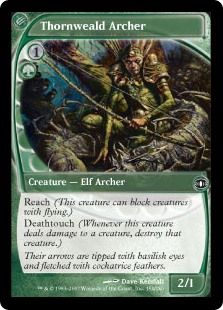
The first creature with deathtouch printed as an official mechanic was Thornweald Archer in Future Sight back in 2007. Shortly after that, the mechanic became evergreen in Tenth Edition. Deathtouch as a mechanic requires the creature to deal damage, while the text on Thicket Basilisk and Cockatrice doesn’t. So it’s not a 100% equivalence like “attacking won’t cause the creature to tap” and vigilance, or “not affected by summoning sickness” and haste.
Nearly 400 cards have since been printed with deathtouch. The color with the most deathtouch creatures is black, followed by green. When it comes to multicolor deathtouch creatures, they’re usually black combined with other colors.
Is Deathtouch a Triggered Ability?
No, deathtouch is not a triggered ability. Those abilities use the stack while deathtouch is actually a state-based ability. It uses game actions that happen whenever a certain condition is met. Basically if a creature is dealt damage from a source that has deathtouch, that creature is immediately destroyed.
Does Deathtouch Work When Blocking?
Deathtouch works on attacking, blocking, and fighting effects. Basically anytime a deathtouch creature deals damage, deathtouch works.
Does Deathtouch Kill a Player?
Deathtouch damage does not kill players and lethal damage only applies to creatures. A creature with deathtouch can only kill a player if they deal enough damage to bring their life to 0 (or infect them with enough poison counters, or deal enough commander damage, or…).
Does Deathtouch Apply to Planeswalkers?
No, a creature with deathtouch can only kill a planeswalker if it deals enough damage to reduce its loyalty counters to 0 or less. Like I already mentioned, deathtouch only applies to creatures. Unless you consider the effect of Hooded Blightfang.
How Does Deathtouch Work with Multiple Blockers?
Deathtouch works well on attacking creatures with multiple blockers. Any creatures dealt damage by the deathtouch creature will die. Multiple blockers get damaged in order chosen by the attacking player and need just one point of damage to be lethal.
Let’s translate this situation into a couple scenarios.
Scenario #1
A 4/4 deathtouch creature is blocked by two vanilla 3/3s. The deathtouch creature splits four damage between the two blockers as its controller so chooses. It assigns three damage to the first blocker (equal to its toughness) and one to the second while the two blockers assign six damage to the deathtouch creature. It dies since it suffered six damage. Both blockers also die since they took at least one damage from a deathtouch source.
Scenario #2
A 1/4 deathtouch creature is blocked by two vanilla 3/3s. Since the deathtouch creature assigns only one damage, its controller has to essentially choose which creature it kills. The first creature it deals damage to is the only creature it deals damage to, so only one of the blockers will die.
How Does It Work If a Creature Has Deathtouch and Trample?
It's great, the attacking deathtouch and trample creature has to assign one damage to the blocker to kill it and any excess damage is dealt to the defending player.
So if a 5/5 attacking trample creature also has deathtouch and is blocked by a 3/3, the 5/5 assigns only one damage to the 3/3 since it’s the least amount of damage needed to kill it, and the other four excess damage is dealt to the defending player. If the 5/5 didn’t have deathtouch, then only two excess damage would be dealt to the defending player.
Keep in mind that this specific interaction only works with attacking creatures because trample only applies on attack, never on defense.
What if You Fight with a Deathtouch Creature?
The deathtouch creature will kill the creature it’s fighting since any amount of damage from a deathtouch source is enough to kill it. In the fight interaction, as seen in cards like Prey Upon, both creatures deal damage to each other equal to their power. The deathtouch creature will only die if the other creature’s power is equal to or more than its toughness.
In the case of Rabid Bite, it’s all upside because your deathtouch creature won’t die since it isn’t dealt any damage.
Does a Deathtouch Creature Kill an Indestructible One?
Indestructible creatures can’t be destroyed from deathtouch damage. The indestructible ability basically overrides any effect that would destroy the creature or apply lethal damage, such as damage from a deathtouch creature.
What Happens to a First Strike Creature vs. Deathtouch?
The first strike creature hits first, potentially killing the deathtouch creature before it can deal any damage to the first strike creature. So the first strike creature can survive.
Let’s see some examples:
White Knight vs. Toxic Scorpion: Knight wins because it kills Scorpion before deathtouch damage can be done.
White Knight vs. Fynn, the Fangbearer: Fynn wins because it survives the two damage and assigns lethal damage to Knight.
What if a Deathtouch Creature Has First Strike?
The first strike deathtouch creature is very hard to block profitably because it assigns deathtouch damage first. So a 1/1 first strike deathtouch can block and attack into a 6/6 creature without any problems. The 6/6 creature receives one deathtouch damage and dies before it can assign any damage of its own.
To interact profitably with a first strike deathtouch creature, you need first strike or double strike creatures of your own.
What Happens to a Hexproof Creature vs. Deathtouch? Shroud?
Shroud and hexproof are mechanics that prevent a creature from being targeted by a spell or ability. Since the interaction with deathtouch happens through combat damage, those mechanics don’t apply.
Does Deathtouch Stop Trample Damage?
Deathtouch does not stop trample damage. Trample damage is assigned based on the difference between the power of the attacker and the toughness of the blocker. So even if a trample creature dies after being blocked by a deathtouch creature, it would still deal damage to the deathtouch creature’s controller assuming it has more power than the deathtouch creature has toughness.
What if a Deathtouch Creature Has 0 Power?
The deathtouch creature must assign at least one point of damage. This means that power shrink effects like Hydrosurge can be very effective at nullifying deathtouch.
What Is a Deathtouch Counter?
A deathtouch counter is a concept introduced in Ikoria: Lair of the Behemoths where as long as a creature has a deathtouch counter, it has deathtouch. The card Boot Nipper can enter the battlefield with a deathtouch counter or a lifelink counter.
Does Deathtouch Work with Pinging?
Yes, if the pinger receives deathtouch from another source it kills any creature that it damages. This interaction can be seen in Constructed with cards like Walking Ballista and Vault of the Archangel or Basilisk Collar that grant deathtouch.
In Limited, the interaction between Porcuparrot and a deathtouch creature like Boot Nipper was strong in Rakdos () and Mardu () decks. This combination kills any creature (except indestructible ones) without the need to engage in combat, albeit one at a time.
Can an Instant or Sorcery Spell Have Deathtouch?
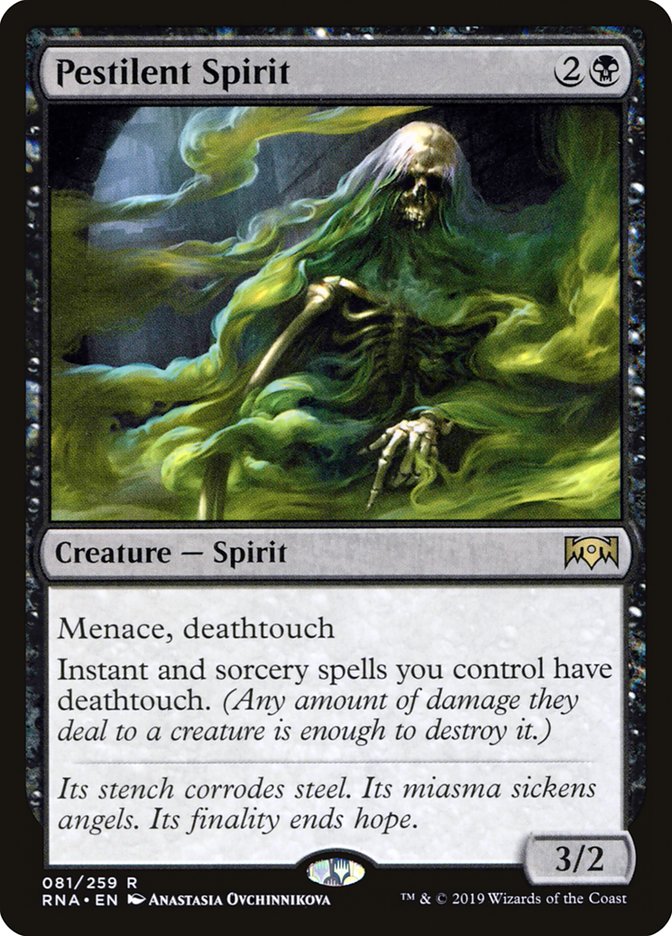
As seen on Pestilent Spirit, an effect can give deathtouch to instants and sorceries.
Do Shield Counters Prevent Deathtouch?
Yes, shield counters prevent the lethal damage that would’ve been dealt to a creature.
What Card Gives All Creatures Deathtouch?
There are a few cards grant deathtouch to all your creatures.
While in Play
Conditionally

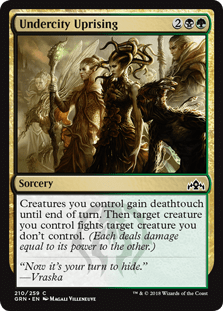
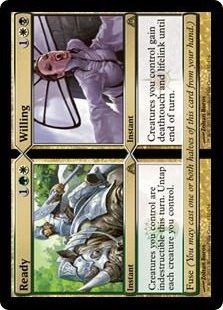


Tribal
What Stops or Beats Deathtouch?
Deathtouch is restricted to combat, which means that removing creatures using spot or mass removal gets the job done. First or double strike is also a powerful way to deal with deathtouch attackers or blockers. Indestructible is another fantastic counter because they won’t die anyway.
Next you have evasion like “can’t be blocked,” flying, or menace. And creatures with deathtouch usually have low power, so a big trample creature can pass damage through if your opponent has some tiny 1/1 deathtouchers on defense, or effects like “can’t be blocked by creatures with power 2 or less” on Enraged Ceratok are very effective in this case. Archetype of Finality can also be a blowout for your opponent’s deathtouch creatures.
Is Deathtouch Good?
Deathtouch is one of the best mechanics that a creature can have because it’s advantageous in so many ways. The only problem is that, like flying, a creature with deathtouch usually won’t have their stats pushed because the ability is very strong.
Best Deathtouch Cards
Here are some of the best cards with deathtouch spanning across time and formats. Many great cards so happen to have deathtouch, but for this list, the nature of deathtouch needs to be especially powerful and key to its use.
Let’s go!
#10. Pestilent Spirit

The only creature to grant deathtouch to spells, Pestilent Spirit was played in some decks where you have effects (usually sorceries) that deal damage to each creature, resulting in a board wipe. Plus its deck had menace tribal, which spirits can take part too.
#9. Glissa, the Traitor
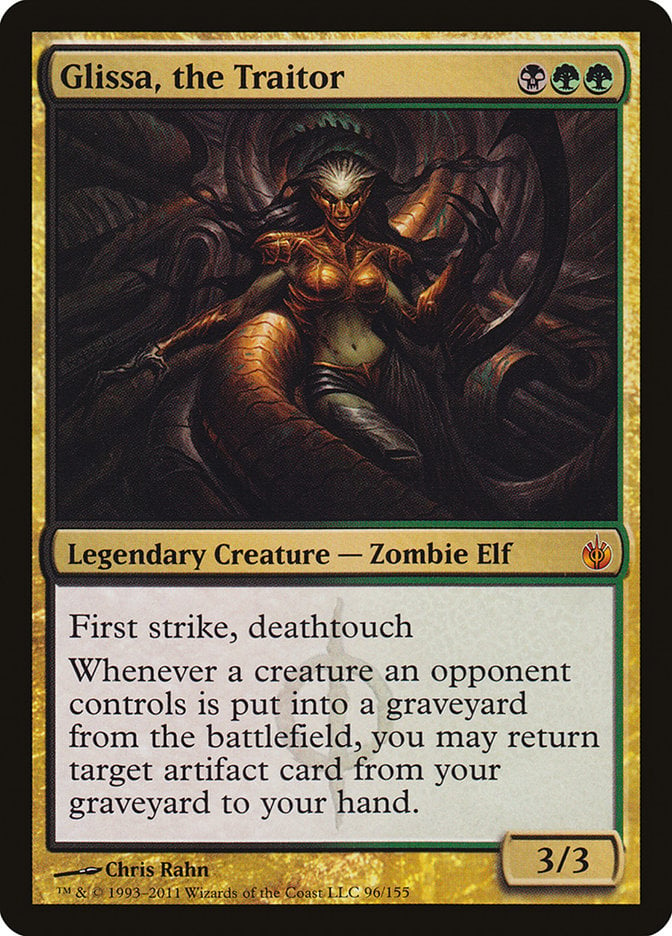
Glissa, the Traitor has its place here because it has first strike and deathtouch, and is probably one of the first creatures to have it naturally. But how do you explore its abilities?
One way is to build a stax deck, sacrificing your own artifacts and recovering them, along with artifacts that can be sacced for value or death triggers. If you control Glissa and attack an opponent you'll almost always net an artifact if they block.
#8. Hooded Blightfang

One of the few deathtouch lords, Hooded Blightfang saw some play around creatures with deathtouch. Plus a 1/4 body holds the fort well against 2/2s and 3/3s, gaining some life in the process.
#7. Master of Cruelties

The ability on Master of Cruelties is powerful despite its high mana cost and lack of immediate effect.
#6. Chevill, Bane of Monsters
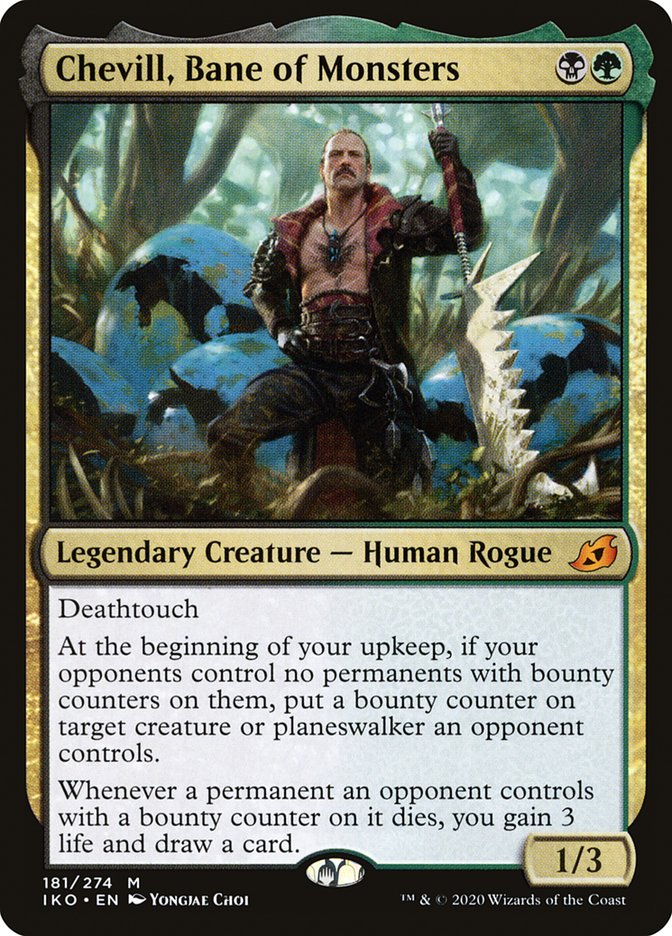
Chevill, Bane of Monsters finds its way into playability here and there. A 1/3 body with deathtouch is okay, what makes it stronger is also being a deathtouch payoff as it draws a lot of cards from your opponent’s creatures dying in a deck with lots of creature removal.
#5 Hornet Queen
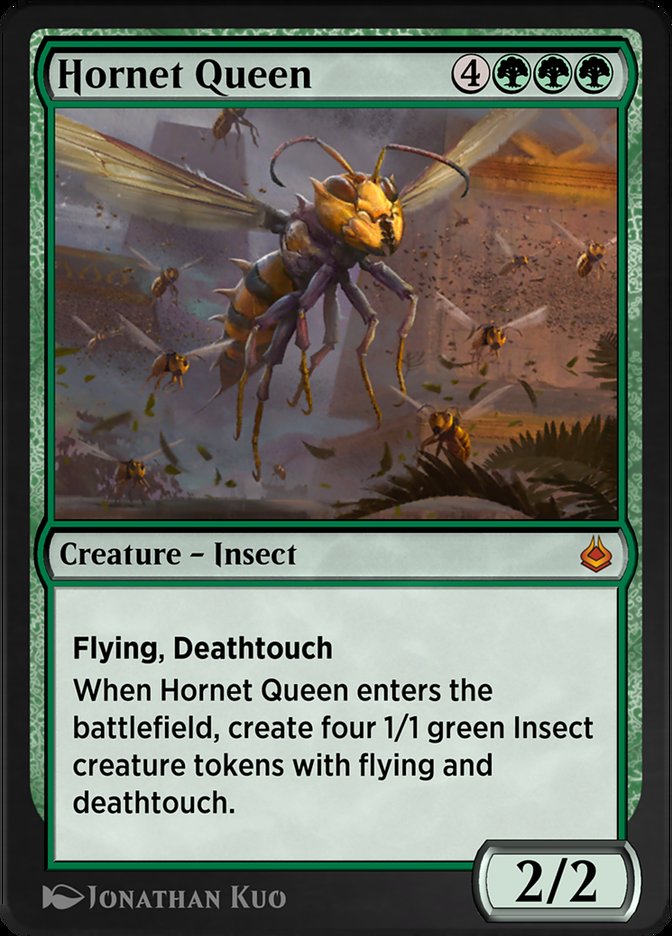
A key piece in reanimator decks and midrange battles, Hornet Queen’s five deathtouch bodies for one card makes it a very good flying wall. It’s also good at pressuring enemy planeswalkers. If the Queen dies just bring it back to life again and repeat.
#4. Deathmist Raptor
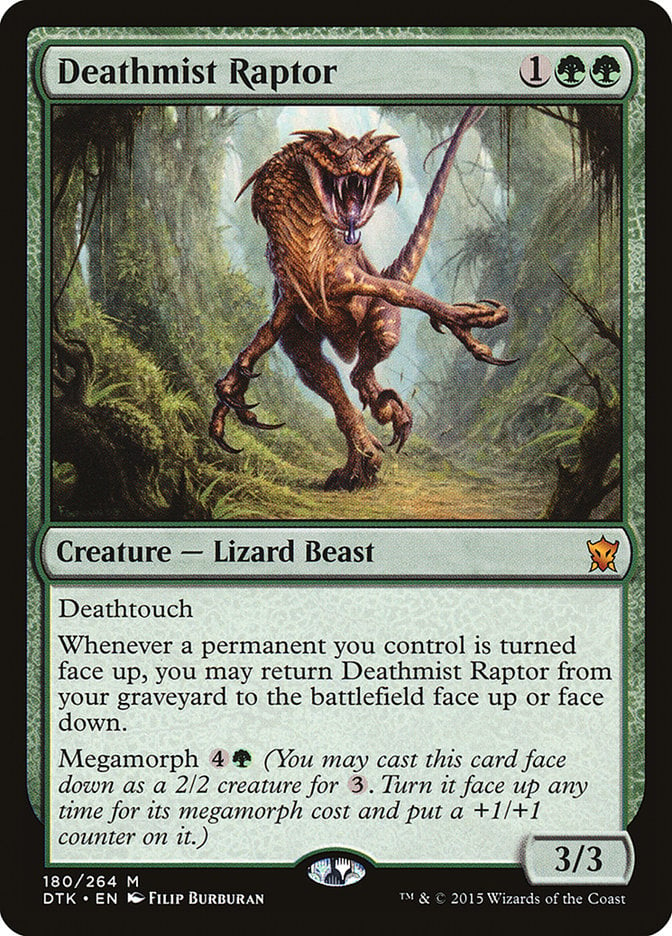
Deathmist Raptor saw a lot of play in its Standard format alongside morphs like Den Protector. A 3/3 body with deathtouch for is already good, and one that can return to the battlefield is even better.
#3. Vault of the Archangel
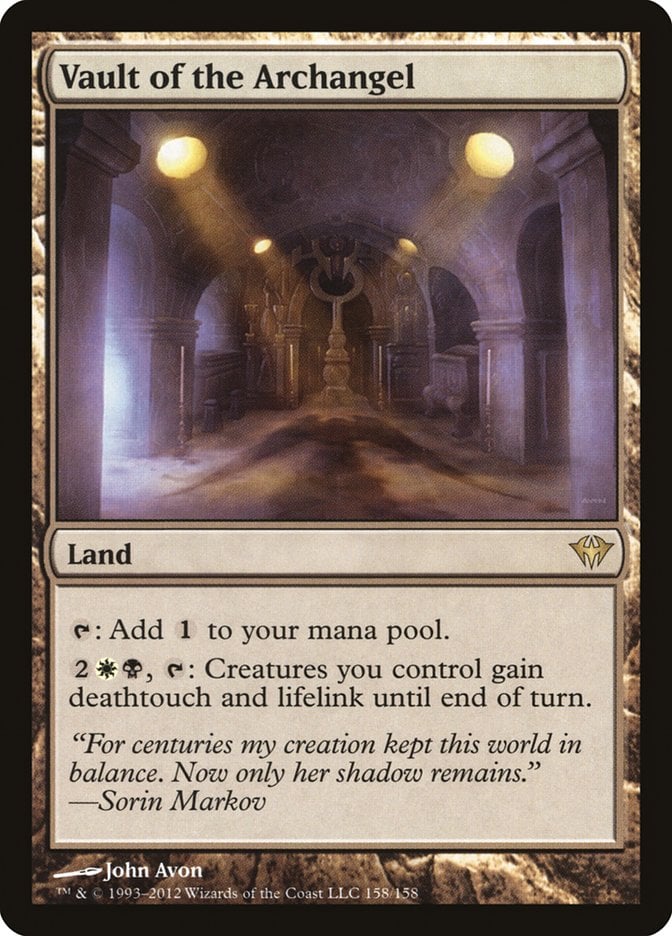
Vault of the Archangel grants deathtouch and lifelink and is very powerful in formats like Modern and Pioneer alongside Walking Ballista and Heliod, Sun-Crowned.
#2 Wurmcoil Engine
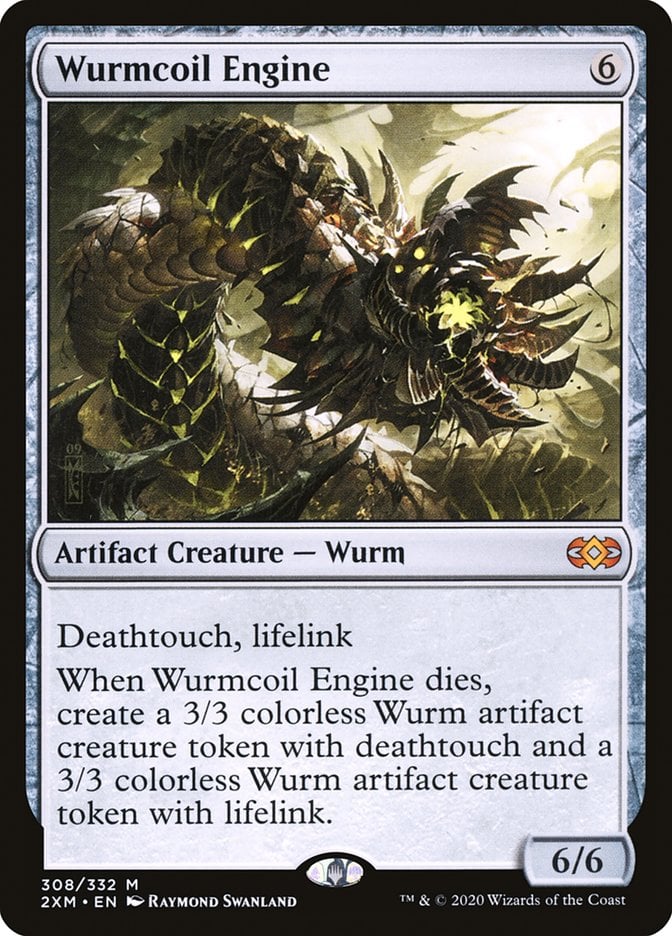
If not for the existence of Path to Exile, Wurmcoil Engine would be one of the most played creatures in older formats. The body is huge, lifelink stabilizes well against aggro, and it offers two bodies when destroyed.
#1. Saryth, the Viper's Fang
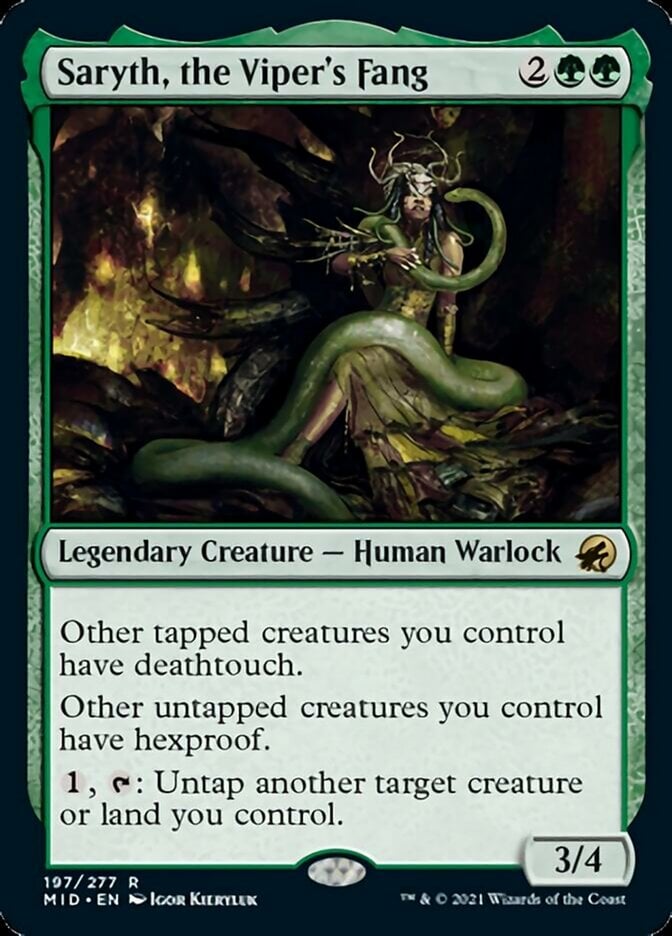
Saryth, the Viper's Fang offers pseudo-evasion and protection for your creatures. Since it grants deathtouch to both pingers and attackers, it can be very nice to pick off targets one by one or attack with lots of green tramplers thanks to the interaction between the two mechanics. You sure can kill an opponent out of nowhere with Saryth.
Decklist: Golgari Death in Historic
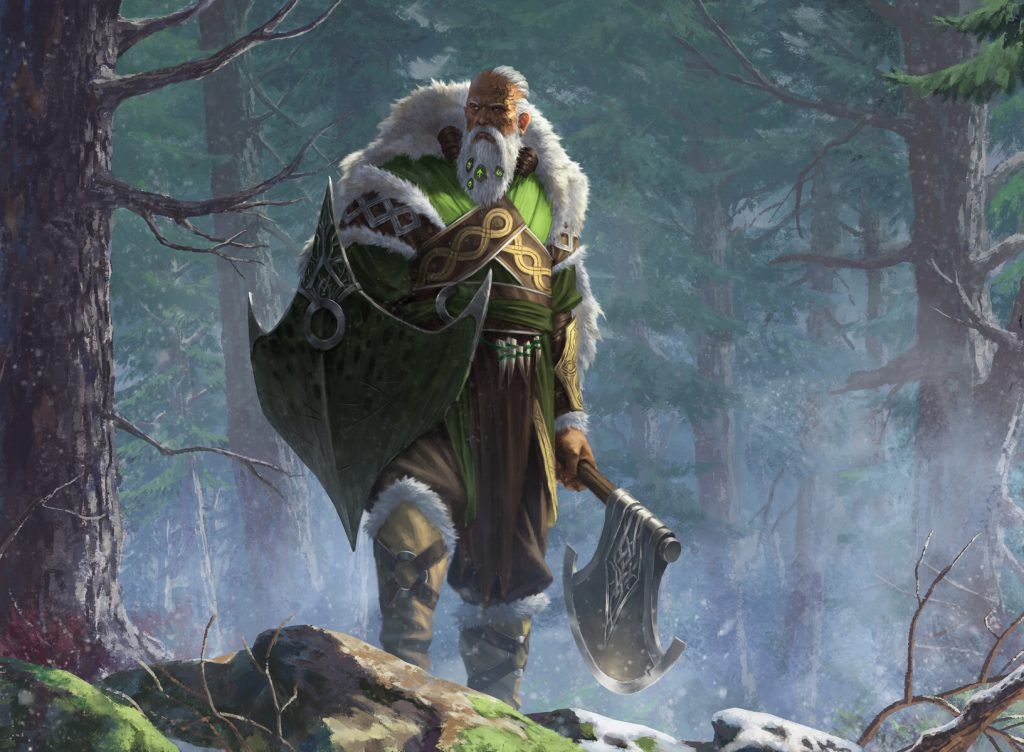
Fynn, the Fangbearer | Illustration by Lie Setiawan
Creatures (29)
Foulmire Knight x4
Thoughtseize x3
Vampire of the Dire Moon x4
Gifted Aetherborn x2
Fynn, the Fangbearer x4
Chevill, Bane of Monsters x3
Hooded Blightfang x2
Nighthawk Scavenger x4
Ochran Assassin x3
Instants (6)
Heartless Act x2
Collected Company x4
Sorceries (3)
Lands (22)
Swamp x6
Forest x4
Blooming Marsh x2
Darkbore Pathway x2
Overgrown Tomb x4
Woodland Cemetery x4
Last but not least, I have this Golgari deck list focused around winning with deathtouch creatures. This deck has discard to prevent your opponents from gaining a leg on you early, and it plays defense with deathtouch creatures to build your board.
Maelstrom Pulse and Heartless Act help to disrupt whatever your opponent is doing. Fynn, the Fangbearer can pull victories out of nowhere and you can have a very strong turn whenever you flash Collected Company on your opponent’s end step. You should hold up well and gain some life against aggro decks.
Wrap Up
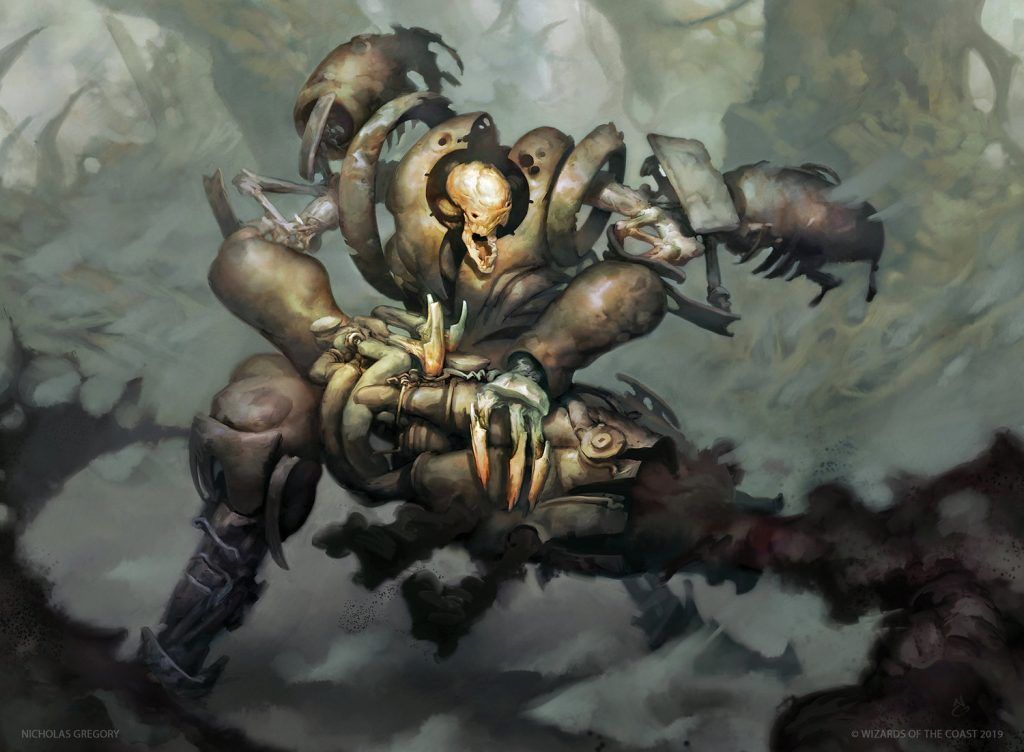
Plague Engineer | Illustration by Nicholas Gregory
Well that’s it for today! Deathtouch creatures are a mainstay of Magic and there will be more of them in years to come. The fact that rares and mythics usually get deathtouch to have a better shot at Constructed play makes even more top tier deathtouch creatures. It’s a simple mechanic but very flavorful, and it does so much for the game.
What’s your favorite memory involving deathtouch creatures in MTG? Have you built a deathtouch-themed deck before? Let me know in the comments below or over in the Draftsim Discord.
Stay safe, eat your vegetables, and I’ll see you in the next one!
Follow Draftsim for awesome articles and set updates:
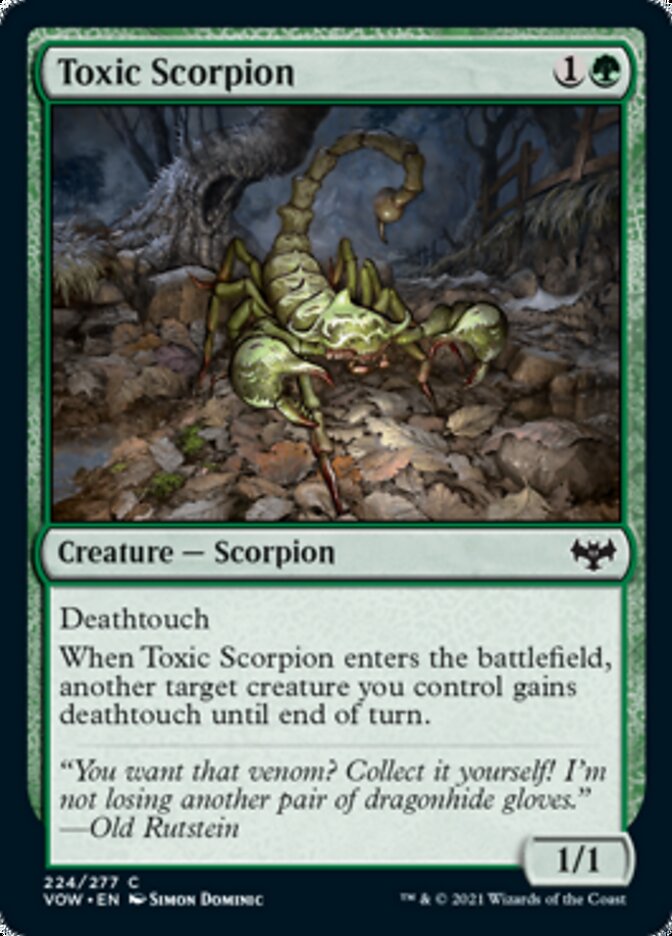

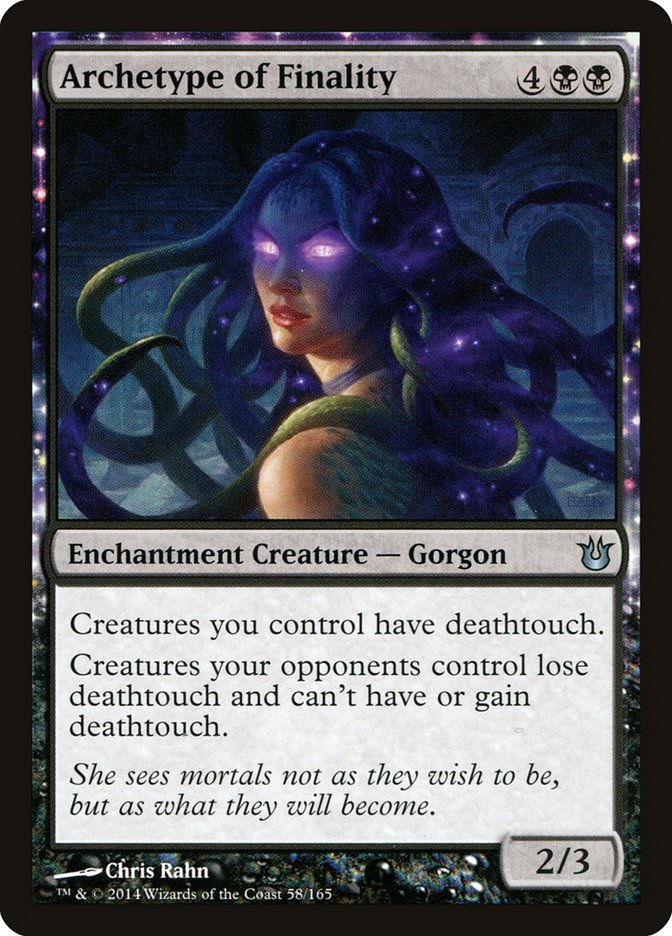
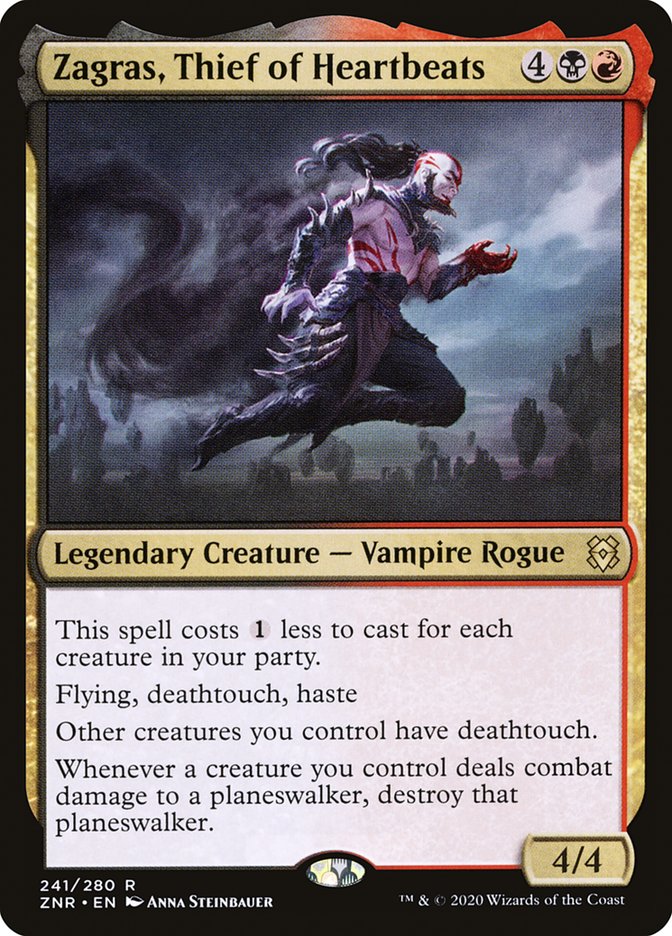
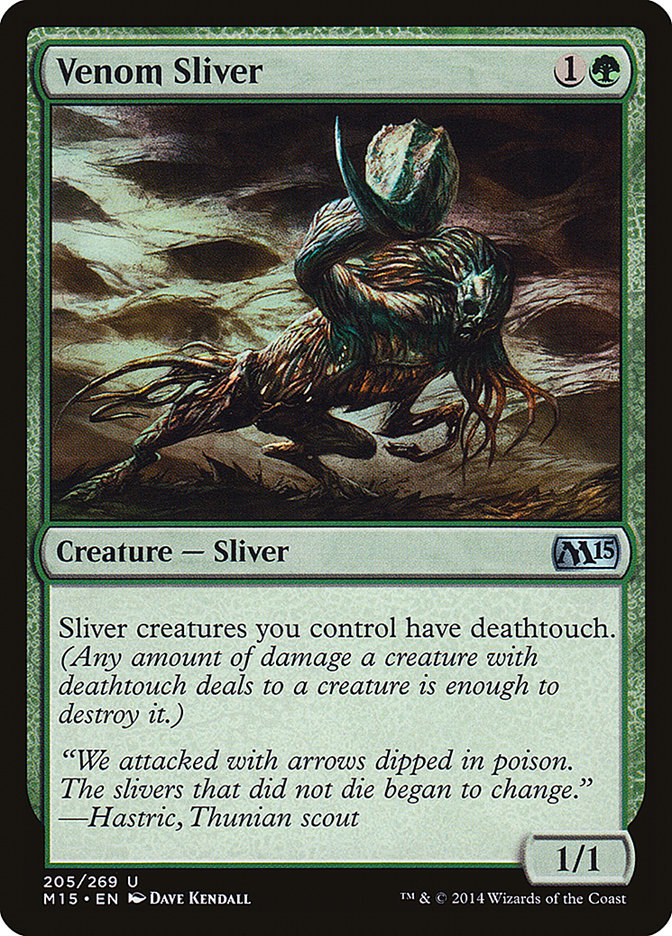


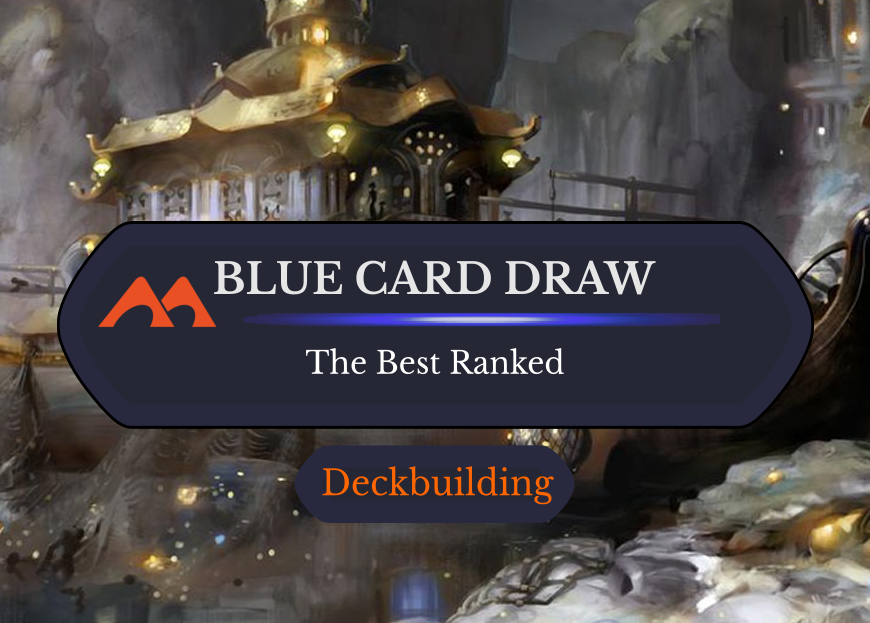
2 Comments
Excellent article! There is a section worth editing at the beginning that says, “Deathtouch as a mechanic requires the creature to deal combat damage…”
This is incorrect. The mechanic only cares if it’s any kind of damage dealt, even outside of combat. This is why a Prodigal Pyromancer equipped or enchanted with some additional deathtouch allows the Pyromancer to sort of mimic Royal Assassin to some degree (essentially destroying creatures with zero combat interaction). Regardless great work!
Fixed, thanks! Changed this to say “deal damage.” Also works with fight cards too.
Add Comment